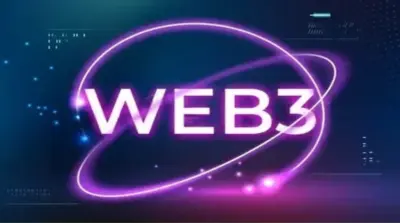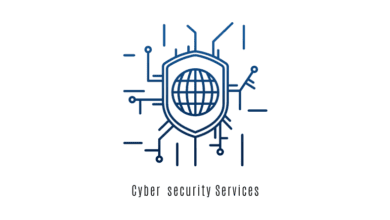Exploring the Future of Banking in the Age of Web3


New technologies and business models are emerging as we rapidly enter the age of web3 and the metaverse, and they have the potential to revolutionize the way banks operate. The application of Web 3.0 in banking has far-reaching consequences. It entails better support for retail bank customers, institutional investors, and businesses. Users also benefit from the metaverse’s ability to provide constant platform updates and the enhanced interactivity made possible by incorporating AI modules into metaverse avatars. Unsurprisingly, the financial industry benefits from the new and advanced capabilities made possible by web3 technologies like blockchain, smart contracts, and NFTs.
As web3 takes center stage in banking, there will be no room for intermediaries. Asset swaps, remittances, insurance, and trade finance will make extensive use of smart contracts in the future. As a result, users will enjoy the benefits of increased automation.
This article will illustrate the significance of web3 in banking, particularly regarding lending, borrowing, and other applications within the banking industry.
Why Web3 Could Be a Game-Changer
Web3 ushers in the era of decentralization, which can be seen as the defining characteristic of the third generation of the Internet (hence the name). The most recent version of the web, Web3, has the potential to alter this power structure by placing users again at the center of attention using open protocols and standards. Power is being redistributed away from centralized platforms through “permissionless” decentralized smart contracts and blockchains. The most challenging part of web3 governance is done in the open, not behind closed doors. Revenue can be returned to creators and users to fund user acquisition and expansion with the right incentives.
To what extent does this matter? Incorporating disintermediation as a central tenet, this approach has the potential to usher in a new era for digital application-based business models. Intermediaries may not be required anymore in terms of data, functionality, and value. Developers and consumers may emerge victorious. It would be preferable to use open-source software rather than proprietary. This motivation would spur developers to create, experiment, scale, and create new things.
The foundations of Web3’s revolutionary concept are blockchain storage, asset ownership information, and transaction records. The primary function of smart contracts in the web3 architecture is the autonomous execution of app instructions.
What Does Web3 Mean for Banks?
Web 3.0 is a natural fit for decentralized financial systems. The two are increasingly being brought together in innovative new projects. They think people can save and spend money just fine without banks. These groundbreaking new resources are now mobile-friendly. By 2022, 83 percent of the world’s population will own a smartphone. To those who favor stablecoins and DeFi, a sizable portion of the global population can access traditional banking services like borrowing, spending, and using digital money without proving their identity or complying with other stringent requirements. The anonymity of Web3 accounts doesn’t prevent this, either.
To what extent can conventional banks adapt to the present? Web3 banking facilitates direct user and creator access to the monetary system. These trailblazers must safeguard their finances, secure their possessions, and build an emergency cushion. The Office of the Comptroller of Currency (OCC) has proposed that banks provide cryptocurrency custody services in the United States. This includes the availability of “cold” wallets, which store cryptocurrency in a secure environment away from prying eyes.
A digitally enabled bank equipped with modern data infrastructure will thrive, while a traditional bank will struggle. Cloud-based, decentralized technology driven by application programming interfaces was used for Web3 marketplace development. Our new global economy requires a cutting-edge payment system compatible with numerous cryptos.
The Advantages of Web3 Banking
Rapid Exchange of Money
Throughout banking history, instantaneous funds transfers and settlement times have been completely out of the question. The time it takes to clear a settlement, which can be multiple business days, will decrease. Day or night, the countdown will begin and end in seconds. It will be much cheaper to send money abroad because transaction and settlement fees will be much lower. All these enhancements are implemented behind the scenes, so the user never has to learn about blockchain.
Blockchain-based Credit Reports
Credit histories can have a significant impact on a customer’s financial well-being. Blockchain-based credit reporting may affect customers’ financial lives more than traditional, centralized credit reporting. It also allows businesses to use novel criteria in determining creditworthiness.
Compliance at a Lower cost
Blockchain solutions offer regulatory bodies the same visibility, auditability, and timeliness that stakeholders enjoy. According to US federal law, all banks with a valid banking license must report any suspicious activity to FinCEN (Financial Crimes Enforcement Network). Regulators trust the banking industry to deal with fraudulent financial transactions. Because blockchain solutions facilitate the incorporation of comprehensive financial metadata into a transaction, financial institutions can more easily keep track of potentially fraudulent activity.
What Advantages Will Using Web3 bring to Regular Bank Users?
Blockchain solutions already have a small but noticeable effect on the banking and finance sectors. You can use the services of certain fintech firms to buy and sell cryptocurrencies and send them to others. These virtual currencies can be used alongside standard paper money. Bank transfers that are simple to initiate, settle quickly, and charge minimal fees for international transfers are on the horizon in countries with advanced financial systems. This marks the first time blockchain technology will have a tangible effect on the daily banking practices of ordinary people. Blockchain solutions can provide a new financial foundation in places without a traditional banking system. If these people in countries without a strong banking system have access to the Internet, they will be more likely to embrace new markets, regulations, and ideas in financial services.
Lending and Web3 in Banking: How Do Smart Contracts Help?
It’s not surprising that web3 depositors would like to profit from their money, but the mode in which this occurs will be different. In web3, customers will store their funds in a non-custodial wallet, essentially just an account on the blockchain, rather than relying on banks or unregulated platforms. In this setup, ownership and transaction records are kept in the distributed ledger rather than being stored with a bank or other unaccountable institution. Customers can get loans directly from other customers, bypassing the need for intermediaries like banks. Instead, they can use smart contracts to secure their money. The smart contract holds these funds in escrow until predetermined conditions are met. People can still apply for loans through web3 lending, but smart contracts will only disperse funds once the borrower has provided sufficient collateral.
The interest rate, loan-to-value ratio, and liquidation threshold are all parameters that are predetermined by the smart contract logic and play a significant role here. All users have access to these openly and honestly. Borrowers still pay interest, but it isn’t distributed to executives or stockholders. Instead, it is run by a decentralized autonomous organization (DAO) with no stake in the profits. Interest on loans is repaid to the initial depositors via smart contracts made by the borrowers.
Endnote
Banks can benefit greatly from implementing web3 technologies. If banks use Web3 for banking, they can expand their customer base beyond the usual channels. Integrating online platforms, digital wallets, or digital currencies allows customers to access essential services. Institutional vaulting is viable for securing digital collectibles, video game virtual currency, and NFTs. By leveraging web3’s interconnected web network, banks can establish a community of trustworthy collectors, merchants, exchanges, and service providers. The bank’s standing as a haven for customers’ money and a reliable ally in their financial growth is bolstered by such actions.




